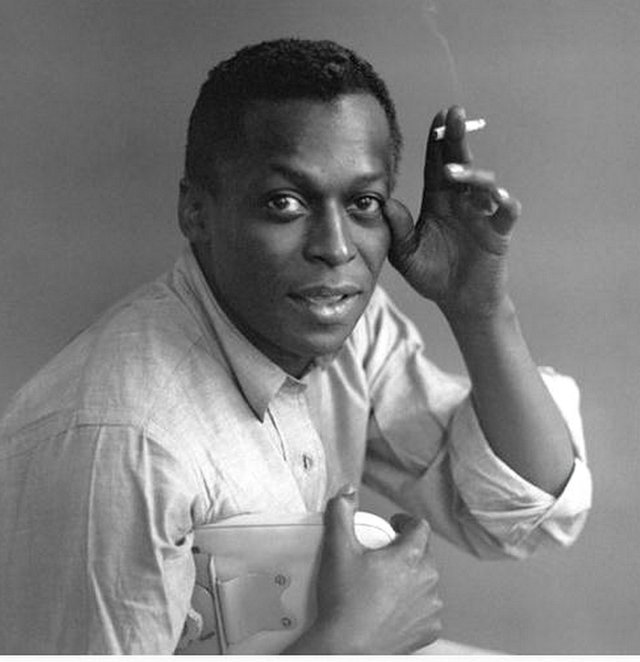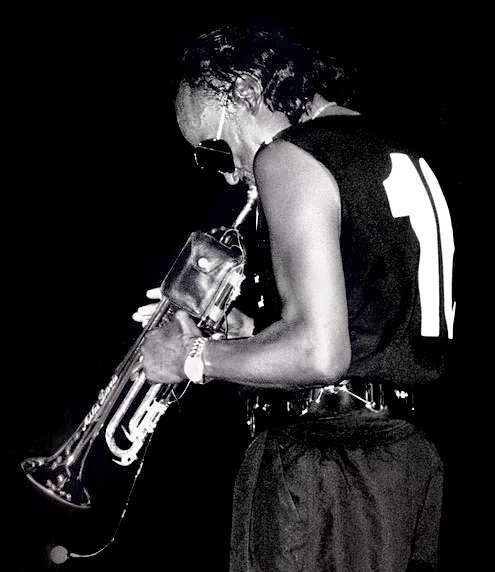
The 1959 is a fundamental year for the history of music. Among the exceptional events that occur in that year there is the birth of a sextet of unrepeatable jazz musicians promoted by Miles Davis. The ensemble consists of Davis on trumpet, John Coltrane on tenor sax, Julian ' Cannonball ' Adderley on alto sax, Bill Evans on piano, Paul Chambers on bass, and Jimmy Cobb on drums. Miles Davis, in those years, is already very well known. It is the former enfant prodige that gives beginning, at only fifteen years, to an extraordinary career, its, of professional of jazz. Just three years later, at eighteen, he finds himself playing the Bop with authentic music myths such as Charlie Parker and Dizzy Gillespie, a master of that new jazz style very popular in the USA around the forties.
Already in 1957 the artistic collaboration of Miles Davis with Gil Evans gave rise to Birth of the Cool, a fundamental record for the history of jazz because through the invention of a brand new music that later will Blur, in California land, jazz White of Jerry Mulligan and Dave Brubeck, in fact introduced changes and expanions of horizon in the bebop. In Birth of the cool, which uses Evans ' arrangements, they play top-notch musicians such as Gerry Mulligan, John Lewis, Lee Konitz, Max Roach, Kenny Clarke and many more. Seminal disc, it was said: Paolo Fresu, on the fortunate partnership Davis-Evans has significantly argued that "both Gil and Miles, have changed the course of twentieth century music mixing few ingredients. Music doesn't need much. It needs a soul and this is hidden above all in the silence... "

At the beginning of March 1959, therefore, Miles Davis entered the recording studio with the sextet and within a few weeks ended the recordings of the unforgettable Kind of Blue. The recording takes part, in one of the recorded songs, also the pianist Wynton Kelly. It is said that in Davis the operation cost only a few thousand dollars: In addition to the dense of the room, the trumpeter had to assure to the musicians his collaborators the salary foreseen by the minimum trade unions and to take charge of the compensation for the tuner of the Piano. Kind of Blue contains six tracks (So What, Freddie freeloader, blue in green, All Blues, flamenco sketches; a seventh track, flamenco sketches (alternative take), has been included in newer editions of the LP that constitute a moment of reflection and re-start Compared to the canons of jazz improvisation in force in the years in which the disc was engraved; At the same time the music contained in Kind of blue dictates the lines of a new way of playing jazz that from that moment would have influenced a very large host of musicians to come. A revolutionary disc, therefore, so revolutionary that it is regarded by some as one of the most influential musical works of the twentieth century; Others have provocatively called it the biggest record of rock'n'roll ever engraved, which makes good the idea of what might have meant in the context of modern music the engraving of this extraordinary work.
If we wanted to throw ourselves into a cinematic comparison, we could say that Kind of blue meant for jazz what the cinema had to do with Godard's last breath.

More in detail one could talk about the music of Kind of blue as of the affirmation of a new way to conceive the jazz improvisation, an improvisation that with the disc of Davis becomes ' modal ', founded that is on an infinite creation of lines Melodic potentially developable having as a point of reference not the harmonic structure of a theme but different types of scales called ' modes '. A well-defined choice that goes far beyond the bebop and the hard bop and that leaves the musician a greater freedom of phrasing, that of the American jazz player, who argued: ' When you catch that path you can go endlessly. You don't have to worry about changing chords anymore and you have a better chance of working on the melodic line. ' (Miles Davis quoted in: Arrigo Polillo, Jazz, updated edition edited by Franco Fayenz, reprint of 2007).
Miles Davis disappeared in 1991 not before having experienced further roads and innovative musical contamination (these are the last few years, for example, with the release of Record productions very criticized from the artistic point of view, the ' approaches ' of Musician to electronic music and hip-hop). Miles Davis left an endless dowry of recorded testimonies. Just listen to any of his discs to warn the heavy weight of his absence and to make us think we would like to have it again among us.